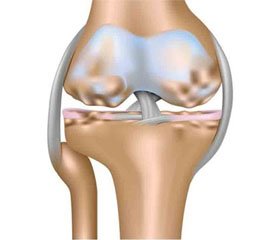Журнал «Боль. Суставы. Позвоночник» 1 (21) 2016
Вернуться к номеру
The changes of bone metabolism in gonarthrosis
Авторы: Syniachenko O., Iermolaeva M., Taktashov G., Geiko I., Potapov Yu., Keting E. - Donetsk National Medical University named after M. Gorky, Liman, Ukraine
Рубрики: Ревматология, Травматология и ортопедия
Разделы: Медицинские форумы
Версия для печати
The article was published on p. 84-85
The topicality of the problems of osteoarthritis of the knee joints (gonarthrosis) is caused by its wide spreading and high risk of the restriction of joint function with the director disability and reduced quality of patients’ life.
The aim and the objectives of this study were to evaluate the role of the bone metabolism with different variants of the clinical course of gonarthrosis, the links with the development of osteoporosis, bone destructive changes in the knee joints according to the findings of X-ray, sonography, magnetic resonance tomography of X-ray densitometry.
Material and methods. We observed 104 patients with osteoarthrosis (47 % of the men and 53% of the women) aged 32 to 76 years old. Gonarthrosis is revealed in 96 % of the cases. Overt reactive synovitis is diagnosed in 62 % of the cases on the results of the clinical and sonographic study, polyarthrosis — in 55 %, systemic osteoporosis in 14 %, osteocystosis — in 91 %, spondylopathy in the form of osteochondrosis and athrosis of facet joints is detected in 72 %. The patients were underwent the X-ray and ultrasound examination of the peripheral joints and the spine, dual-energy X-ray osteodensitometry of the proximal femur, and magnetic resonance imaging of the knee joints. On examination «osteodeficiency indices» were estimated, bone mineral density values, rates of severity and progression of osteoarthritis.
Results. In healthy people the blood levels of calcium were 99.40 ± 0.68 mg/l, magnesium — 27.20 ± 0.71 mg/l, phosphorus — 412.70 ± 9.17 mg/l, parathyroid hormone — 31.70 ± 2.29 ng/ml, calcitonin — 16.50 ± 2.27 ng/ml, osteocalcin — 8.60 ± 0.93 ng/ml, alkaline phosphatase activity — 88.90 ± 5.39 iu/l. In osteoarthritis of the knee joints the changes of the levels of calcium were detected in 98 % of the cases, magnesium — in 92 %, phosphorus — in 16 %, parathyroid hormone — in 54 %, calcitonin — in 36 %, osteocalcin — in 63 %, alkaline phosphatase activity — in 47 %. According to multivariate analysis of variance the spreading and the radiographic stage of articular syndrome have little influence on the integral parameters of the bone metabolism markers (MBM) in the patients with gonarthrosis. However, MBM depend on the sex of the patients and their age, although, as the gender-specific individual indices of MBM are absent, and there is only the inverse correlation of the parameters of parathyrin with the age of the patients. If the blood levels of osteoassociated macroelements and the hormones in gonarthrosis with osteoporosis do not change, then the activity of alkaline phosphatase in these patients significantly increased by 32 %. It is established that the blood levels of calcium < 45 mg/l are prognostic negative as for the course of gonarthrosis, the content of calcitonin < 2 pg/ml is a risk factor for the development of Baker (popliteal) cysts. Bone metabolic disturbances in osteoarthritis of the knee joints are associated with the rates of the progression of the disease and the spreading of the articular syndrome, and the indices of MBM can have a prognostic value. MBM (osteoassociated macroelements, hormones parathyrin, calcitonin, osteocalcin, and alkaline phosphatase enzyme) are involved in the pathogenetic construction of gonarthrosis and they determine the development of individual radiographic, sonographic and magnetic resonance articular and periarticular signs of the patholo-gy of the knee joints (the degree of narrowing of the articular slits, epiphyseal osteoporosis, trabecular oedema in the condyles of the femur (thigh-bone) and tibia (shinbone), the changes of the horns of meniscus, the formation of Baker cysts, intraarticular cartilage flaps and Hoffa bodies).
Conclusion. Significant changes in the blood markers of bone metabolism (MBM) in the patients with gonarthrosis are observed, at the same time it reveals itself in the imbalance of osteoassociated macroelements (calcium, magnesium, phosphorus) with the development of hypocalcemia, which is detected relatevely in 98 %, high activity of alkaline phosphatase (in 47 % of the cases), signs of hyperparathyroidism and hyperosteocalcaemia. The bone metabolic disturbances have clinical and pathogenetic significance in gonarthrosis that requires the development of specific medical technologies for treatment and rehabilitation of such patients.

